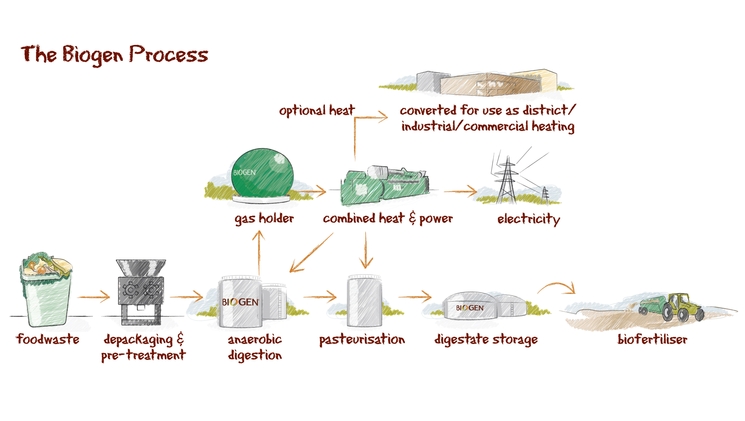What is Anaerobic Digestion?
Anaerobic digestion is the process by which organic matter such as animal or food waste is broken down to produce biogas and biofertiliser. This process happens in the absence of oxygen in a sealed, oxygen-free tank called an anaerobic digester.

Anaerobic digestion is recognised by the government, Defra, the Welsh Assembly, the Scottish Parliament, Friends of the Earth and the National Farmers Union as one of the best methods for food waste recycling and dealing with farm waste and sewage sludge.
The word Anaerobic actually means ‘in the absence of oxygen’. The biogas naturally created in the sealed tanks is used as a fuel in a CHP (combined heat and power) unit to generate renewable energy i.e. electricity and heat.
What’s left from the process is a nutrient rich biofertiliser which is pasteurised to kill any pathogens and then stored in large covered tanks ready to be applied twice a year on farmland in place of fossil fuel derived fertilisers.
Every tonne of food waste recycled by anaerobic digestion as an alternative to landfill prevents between 0.5 and 1.0 tonne of CO2 entering the atmosphere, one of the many benefits of anaerobic digestion.
